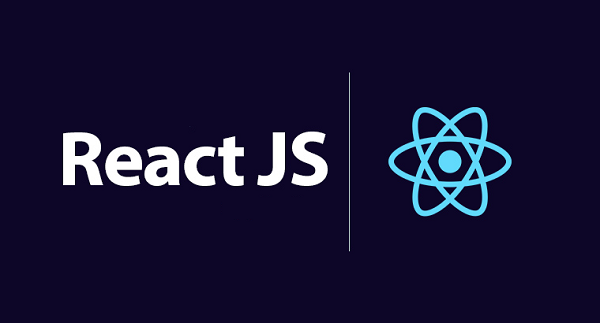
Introduction:
In the digital age, mobile and web applications have become an integral part of our daily lives. React, a powerful JavaScript library for building user interfaces, has revolutionized frontend development. This article will serve as your comprehensive guide to understanding React, its history, advantages, and key features. Whether you’re a beginner or an experienced developer, buckle up for an enriching journey into the world of React.

What is React?
React, often referred to as ReactJS, is not just a framework; it’s a JavaScript-based UI development library. It was introduced in May 2013 and has quickly become one of the most popular choices for frontend development. React provides a declarative and component-based approach to building interactive user interfaces, making it easier to create and maintain dynamic web applications.
ReactJS History:
Founded by Jordan Walke, a software engineer at Facebook, in 2011, React has a relatively short but impactful history. Initially, React powered Facebook’s newsfeed in 2011 and later became a cornerstone for Instagram’s platform. Today, it is widely adopted due to its efficiency and seamless user experience.
Why React?
React’s popularity stems from its ability to simplify the creation of dynamic applications. The use of Virtual DOM enhances performance by updating only the changed components. Key advantages include reusability of components, unidirectional data flow for easy debugging, and support for both web and mobile app development through React Native.
ReactJS Keys:
When dealing with periodically produced components, React keys become crucial. These keys uniquely identify components, aiding React in tracking changes, additions, or removals. Keys are essential when working with lists of components in React, ensuring efficient rendering and updating.
ReactJS Advantages:
- Customized Virtual DOM: React builds a customized Virtual DOM, enhancing app performance.
- Amazing UI: React facilitates the creation of visually appealing user interfaces.
- Search Engine Friendly: React applications are search engine friendly.
- Readability: Modular architecture and valid data enhance readability, making it easier to manage larger apps.
- Integration: React integrates seamlessly with various architectures.
- Simplified Scripting Environment: React simplifies the scripting environment and eases maintenance, boosting overall productivity.
Key Features of React:
- JSX: A JavaScript syntactic extension that allows embedding HTML into JavaScript code.
- Virtual DOM: React’s lightweight version of the Real DOM, ensuring faster updates and rendering.
- Architecture: React operates as the ‘View’ in the Model-View-Controller (MVC) architecture.
- Extensions: React goes beyond UI, offering extensions for mobile app development and server-side rendering.
- Data Binding: React employs one-way data binding for modular and fast activities.
- Debugging: React applications are easy to debug, with tools like the React browser extension provided by Facebook.
Components in React:
Components are the building blocks of React applications, representing different parts of the user interface. They promote reusability, ease of debugging, and efficient organization of code. With examples like Functional and Class components, React allows developers to create modular and scalable applications.
Props in React:
Props, short for properties, enable the passing of data and event handlers between components. They contribute to the dynamic nature of components, allowing them to receive and display different values. Props are read-only and cannot be modified within the component.
State in React:
State is an object that stores property values for a component, capable of changing over time. React re-renders the component upon state changes, providing a responsive user interface. The setState() method is used to alter the state object’s value, ensuring efficient updates.
Props vs. State in React:
Props are used for passing data and event handlers between components, while state stores the view-related data that can change over time. Props are immutable, and both functional and class components can benefit from them, while only class components can utilize state.
ReactJS Prerequisites:
Before diving into React, it’s beneficial to have a grasp of programming concepts, basic JavaScript knowledge, and some familiarity with HTML. These prerequisites lay a foundation for a smoother learning experience.
Industry Trends in React:
React has emerged as the most popular web framework globally, surpassing other frameworks and libraries. The demand for React developers has led to lucrative opportunities, with competitive salaries. According to industry trends, React is favored for its ease of use and efficient frontend development capabilities.
Is React Worth Learning?
Absolutely! React’s popularity is on the rise, making it a valuable skill for developers. The average salary for React developers is competitive, and the framework’s versatility ensures its relevance in various projects.
Brand Boost Up – Your One-Stop Solution:
Looking to master React and enhance your web development skills? Brand Boost Up is your one-stop solution for comprehensive courses, including full-stack development, MEAN Stack, and automation testing. Our online bootcamps provide lifetime access to high-quality, self-paced e-learning content, ensuring you stay ahead in the rapidly evolving tech landscape.
Conclusion:
In conclusion, mastering React opens doors to a world of efficient and dynamic web development. Whether you’re a seasoned developer or just starting, understanding React’s core concepts, features, and advantages is essential. Embrace the journey of becoming a proficient React developer and explore the vast opportunities it brings. Choose Brand Boost Up for top-notch courses and elevate your skills in the ever-evolving tech industry. Happy coding!




